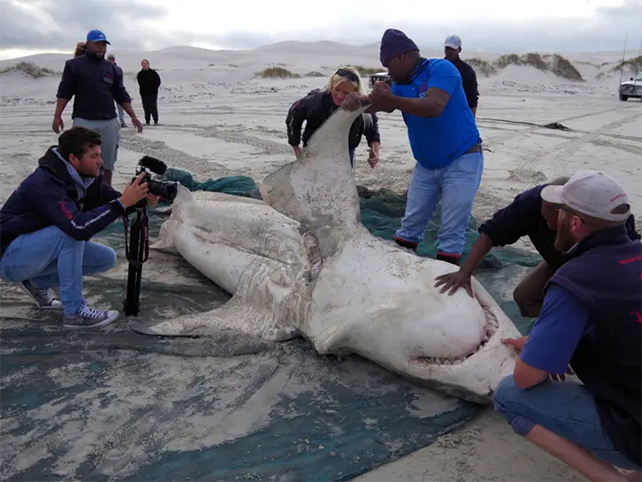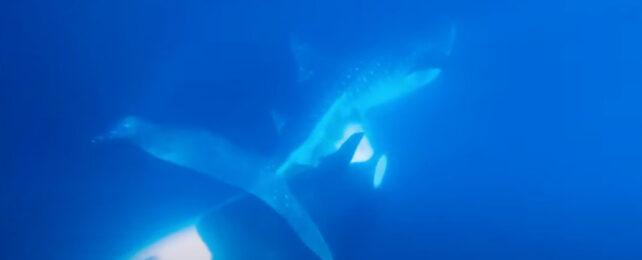Divers in California have captured a rare video of a killer whale "slurping" the liver out of a live shark.
The gruesome footage shows an orca tearing into the stomach of a 30-foot (9 meter) long whale shark before removing its liver.
Other nearby orcas are heard clicking excitedly as the killer whale swims away from the shark that sinks lifelessly to the bottom of the ocean.

The footage was captured by 58-year-old diver James Moskito in the Sea of Cortez in California in April when he and other divers encountered a pod of eight killer whales. In the video, the divers are heard whooping at the view of the orca.
"It's literally over in a matter of seconds," Moskito told Live Science.
"Looks like they slurped in the liver and then the whale shark just fell and descended down, with no movement – I'm assuming it was dead," he said.
Shortly after the encounter, another orca killed another whale shark nearby. By the time the team got to the shark, it was "just thrashing at the surface with a killer whale attached to it," he said.
Shark livers are orca delicacies
While this footage is rare, this isn't the first time this behavior has been observed. Previous research had found that the behavior is widespread near the Farallon Islands in northern California.
Two other orcas, who live in the waters of South Africa's Mossel Bay, have become so good at ripping the livers of sharks that they have scared great white sharks away from their hunting grounds.

Orcas tend to go for the part of their prey that gives them the best "bang for their buck," Michael Weiss, research director at the Center for Whale Research, previously told Insider about the behavior.
"Shark livers are extremely fatty, so there's a lot of calories in there," he said.
It's even possible the orcas use their sonar to detect the most delectable parts of their prey, he said.
After the most attractive parts of their prey are gone, the whales move on to another shark, leaving the carcass to bottom-feeding scavengers.
This article was originally published by Business Insider.
More from Business Insider: